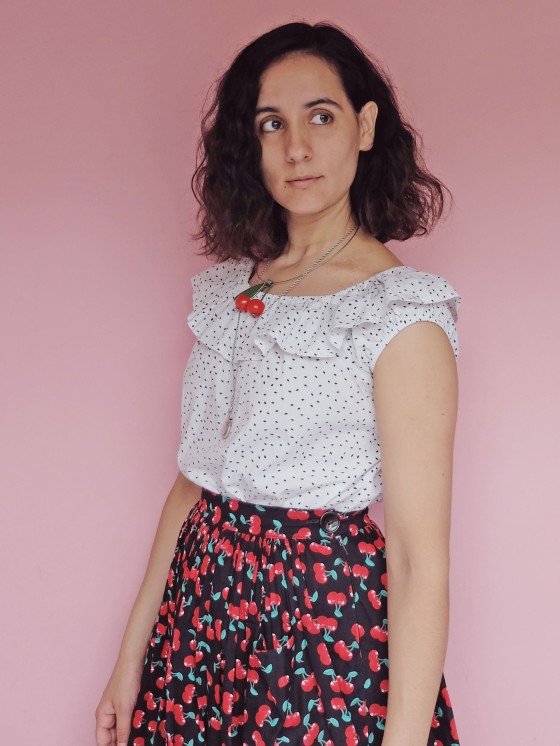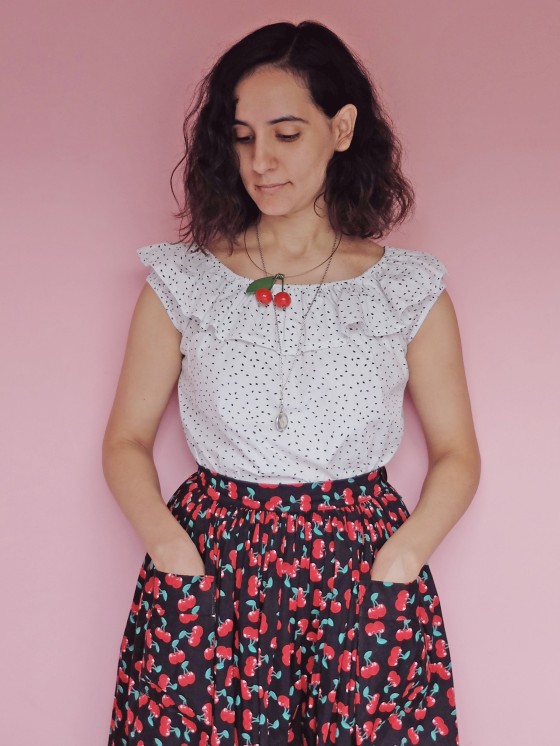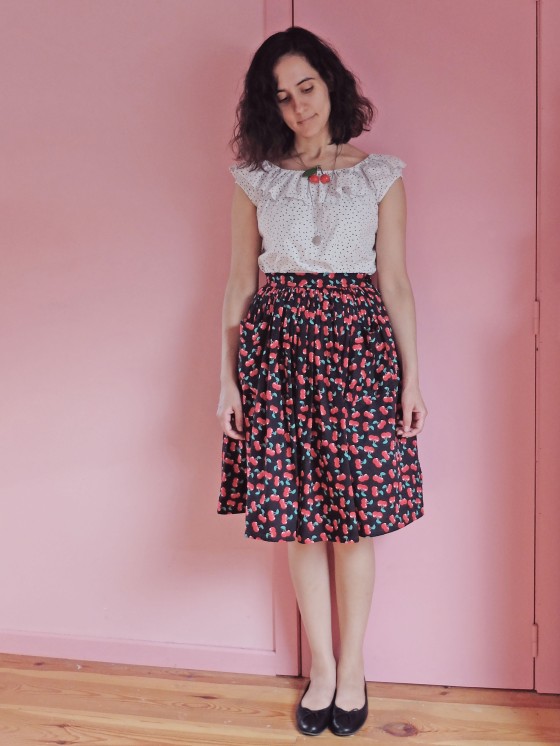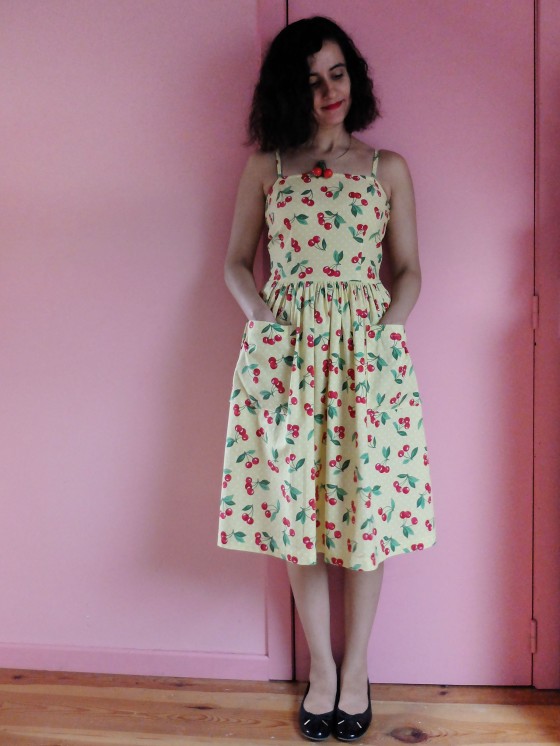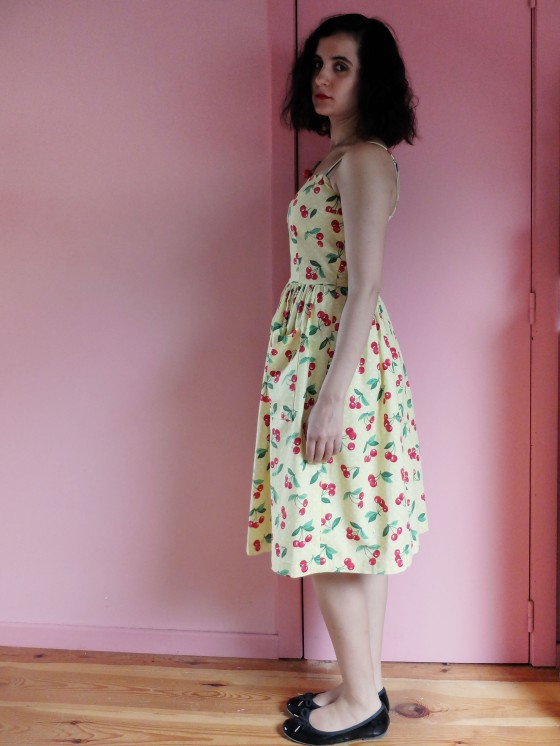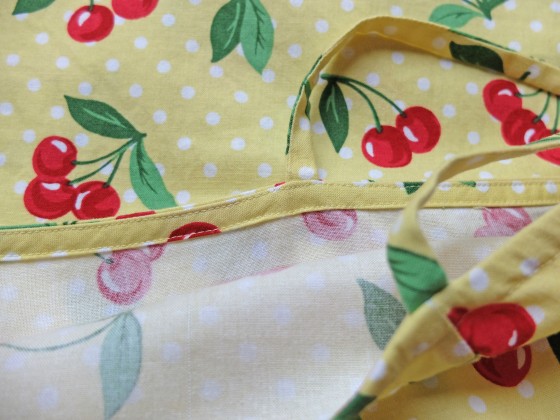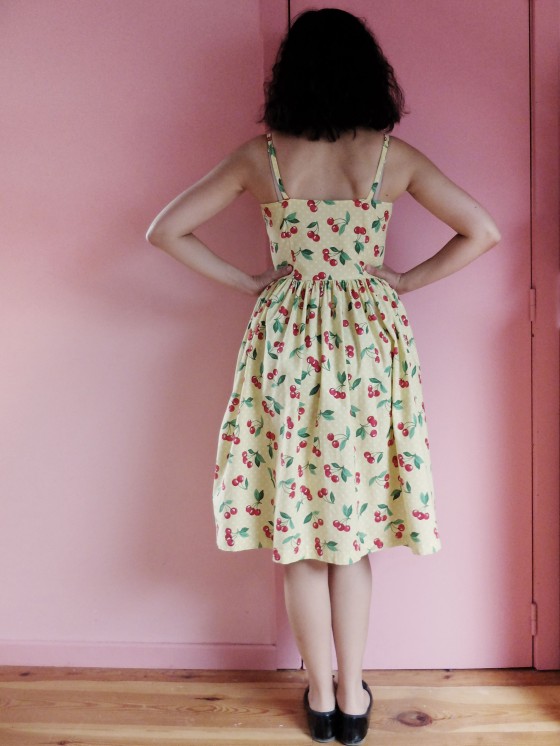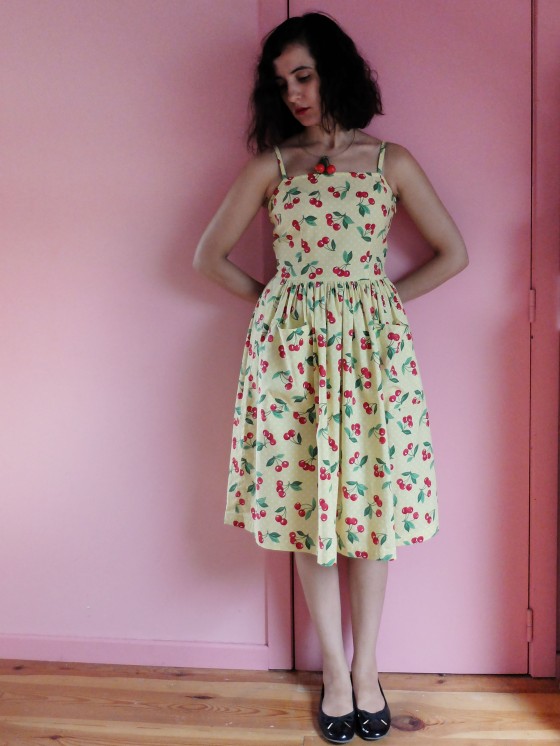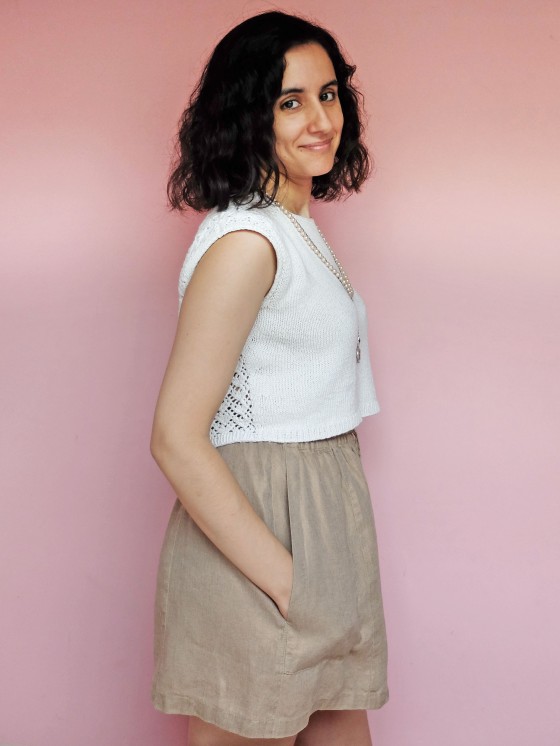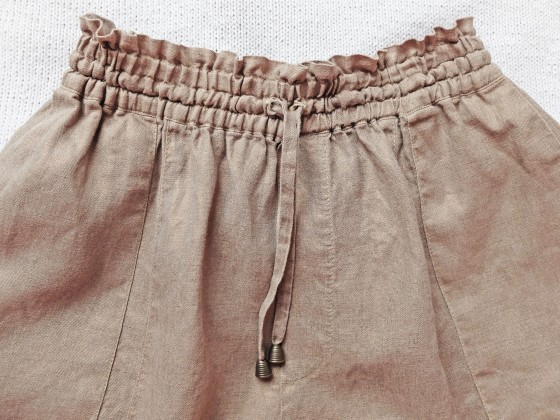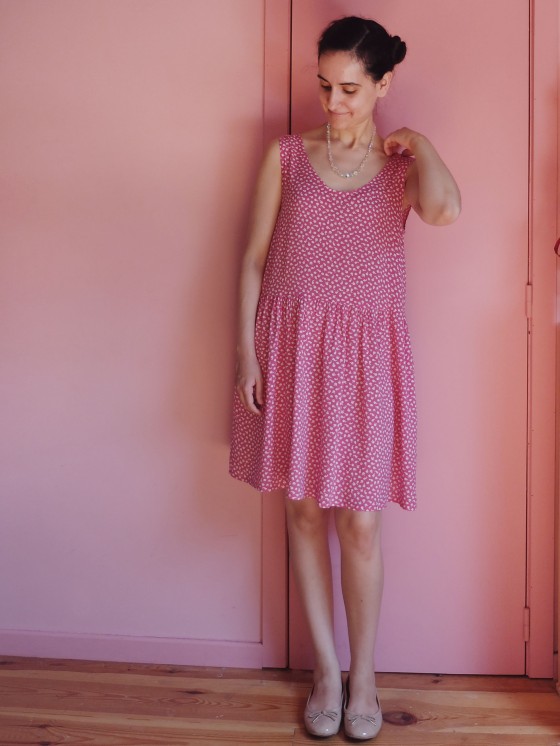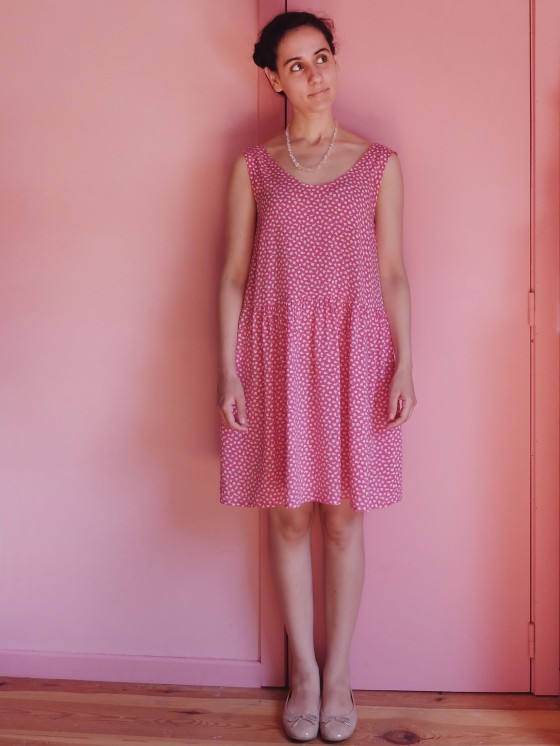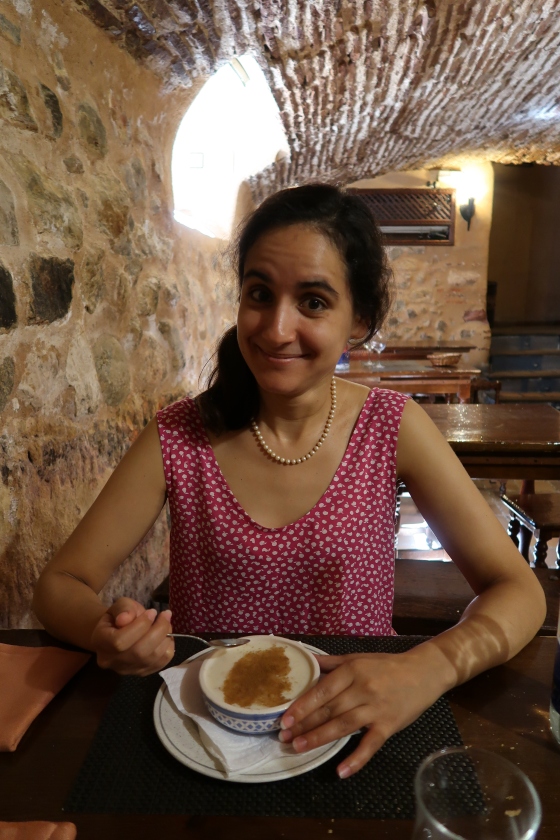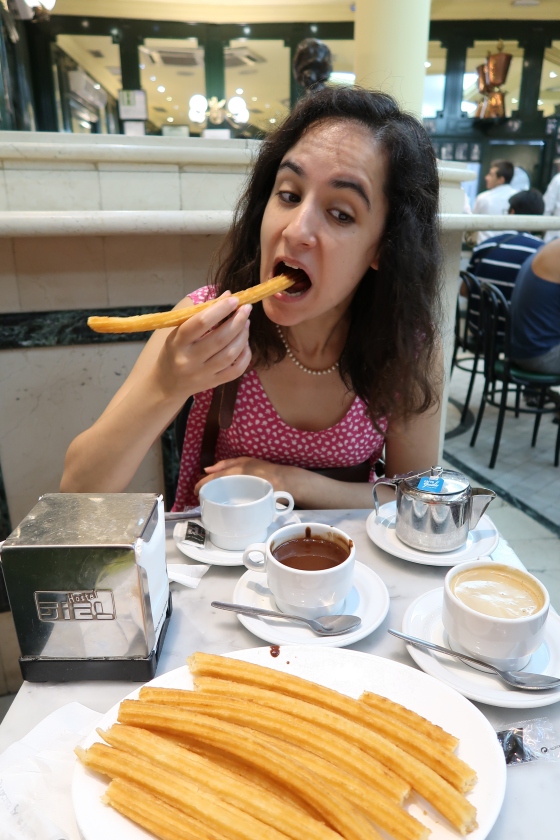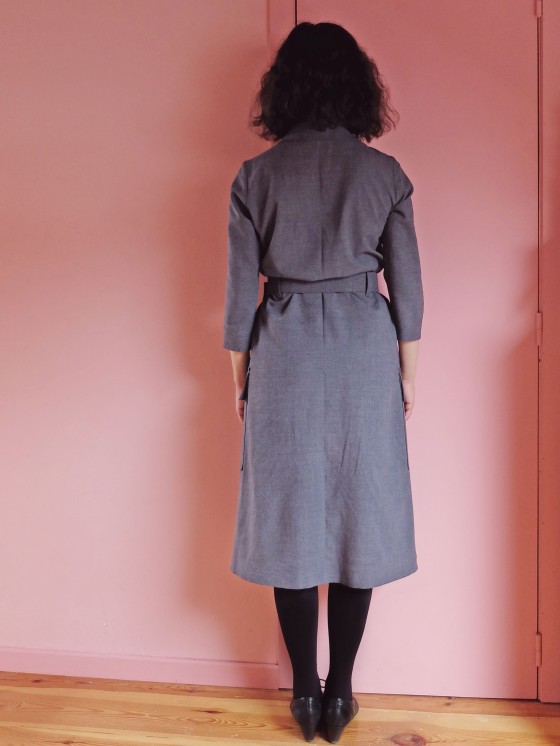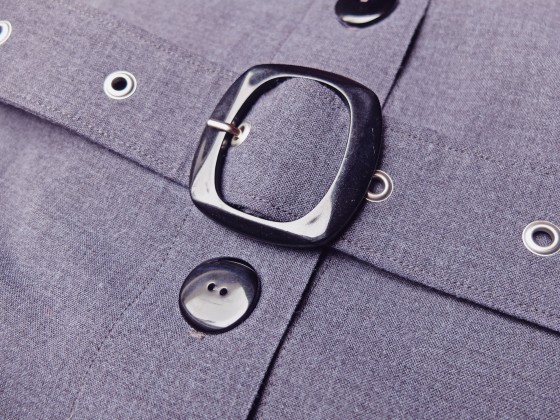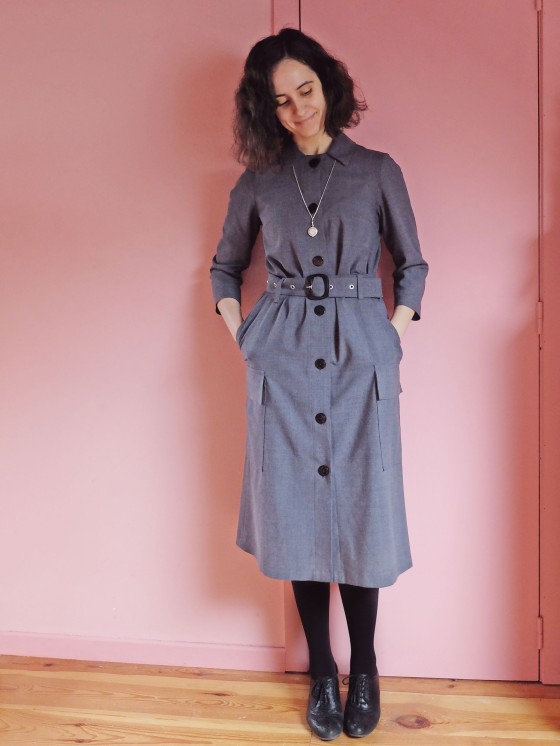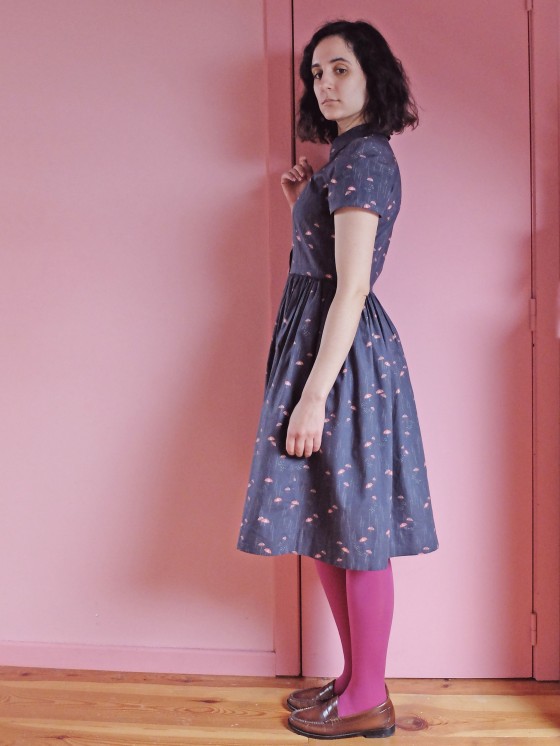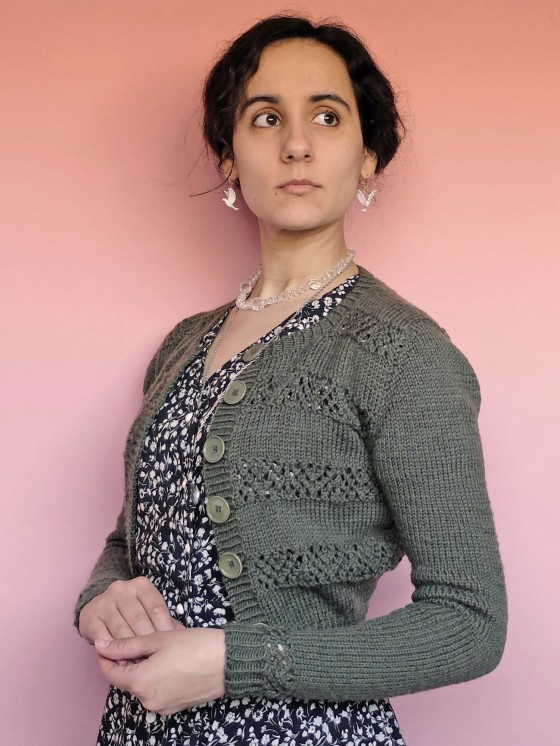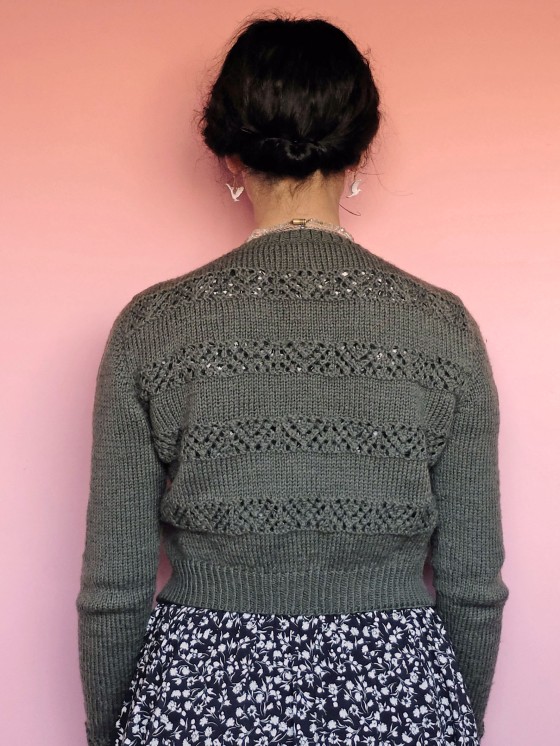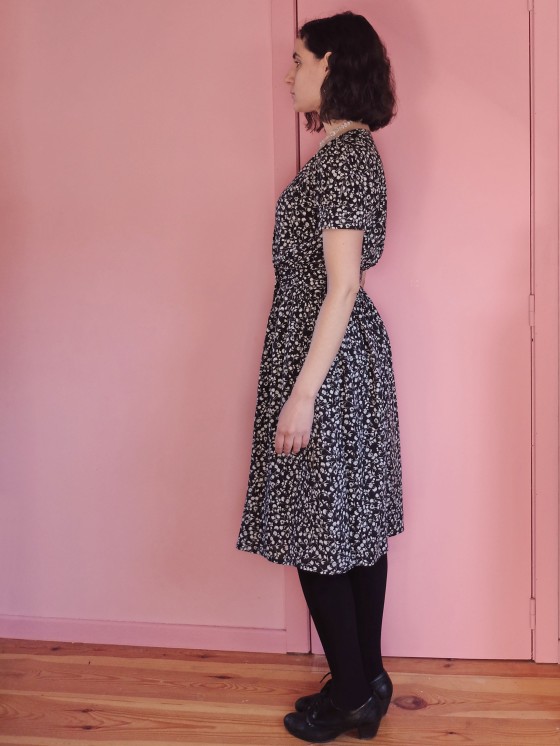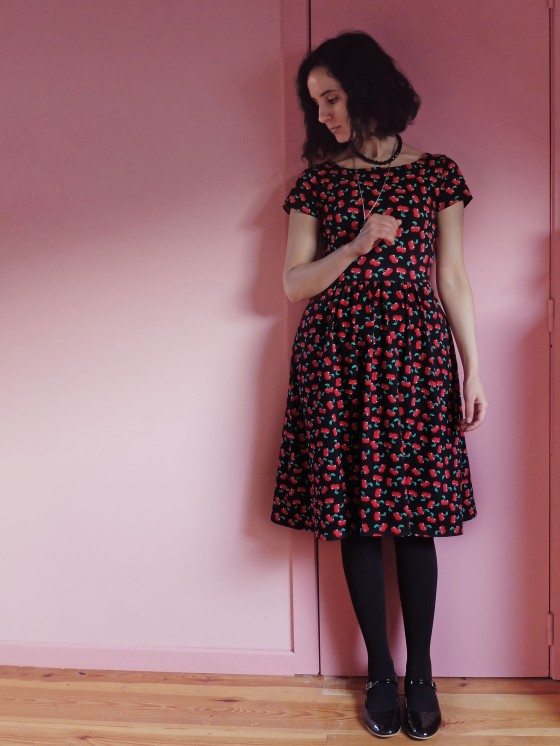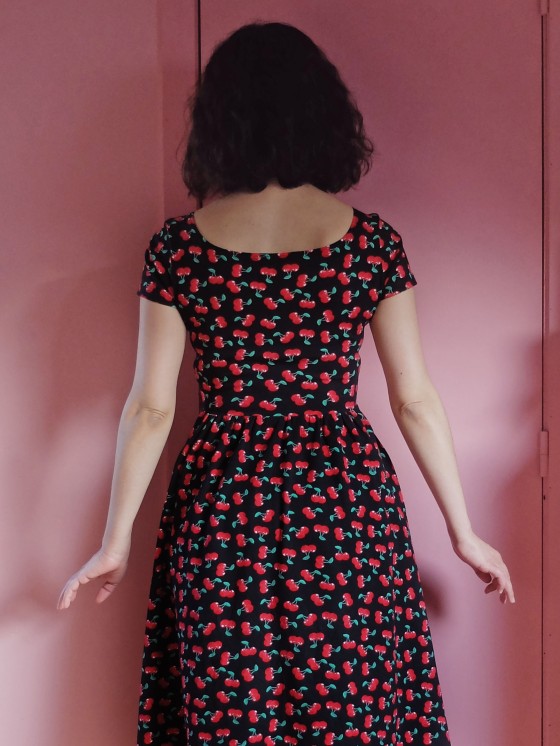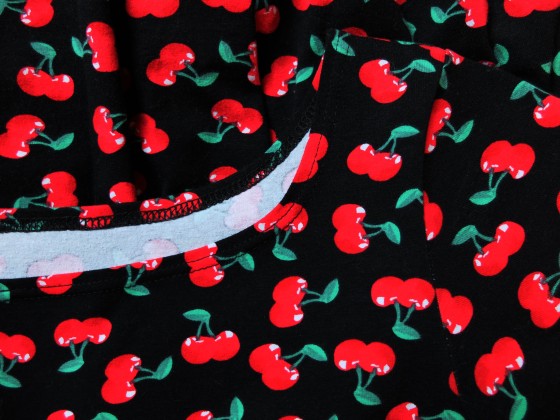 This is probably the last post here, at least for a while, maybe forever!
This is probably the last post here, at least for a while, maybe forever!
I’ve lost the desire to blog for a few months now and I’m not sure when or whether it’s going to come back. I wanted to wrap things up properly; what better occasion than a last year in review?
Once again, thanks to Instagram (where you’ll still be able to see what I’m up to, in case you ever miss me 😉 ), I’ve photographed everything I’ve made this year:
 And once again, I’ve made more things than I would have thought: 32, which is not bad at all since I’ve really just sewn and knitted when I’ve felt like it!
And once again, I’ve made more things than I would have thought: 32, which is not bad at all since I’ve really just sewn and knitted when I’ve felt like it!
 Out of these 32 things, 5 are knitted, 1 is a little DIY necklace and the rest is sewn (half wovens, half knits).
Out of these 32 things, 5 are knitted, 1 is a little DIY necklace and the rest is sewn (half wovens, half knits).
 Like last year (and the year before that, and the year before that, and…), most of my production consists of dresses, tops and cardigans. One thing that’s a first is that I finally made a swimsuit! I had cut another pattern out of the same fabric years ago, but had fell out of love with it, so I cut this new pattern out of the remnants and some of the pieces of the first swimsuit project, and goodbye UFO! This swimsuit is my favourite thing I’ve made this year!
Like last year (and the year before that, and the year before that, and…), most of my production consists of dresses, tops and cardigans. One thing that’s a first is that I finally made a swimsuit! I had cut another pattern out of the same fabric years ago, but had fell out of love with it, so I cut this new pattern out of the remnants and some of the pieces of the first swimsuit project, and goodbye UFO! This swimsuit is my favourite thing I’ve made this year!
 As for the brands I’ve used, as usual it’s a little bit of everything, this year with a little bit more vintage: true vintage, vintage reproductions, vintage styles…
As for the brands I’ve used, as usual it’s a little bit of everything, this year with a little bit more vintage: true vintage, vintage reproductions, vintage styles…
 The biggest highlight for me outside of sewing/knitting in 2018 is without a doubt that I’ve just bought a house! It had been a completely unattainable dream of mine for years that suddenly became attainable thanks to a chain of events, and I couldn’t be more thankful for it. The house needs quite a bit of restoration work before Monsieur, the cats and I can move in, so in 2019 I’ll trade in my sewing tools for power tools!
The biggest highlight for me outside of sewing/knitting in 2018 is without a doubt that I’ve just bought a house! It had been a completely unattainable dream of mine for years that suddenly became attainable thanks to a chain of events, and I couldn’t be more thankful for it. The house needs quite a bit of restoration work before Monsieur, the cats and I can move in, so in 2019 I’ll trade in my sewing tools for power tools!
Thank you so much to everyone who has been reading this blog, it’s been five fun years thanks to you! And bonne année 2019!
